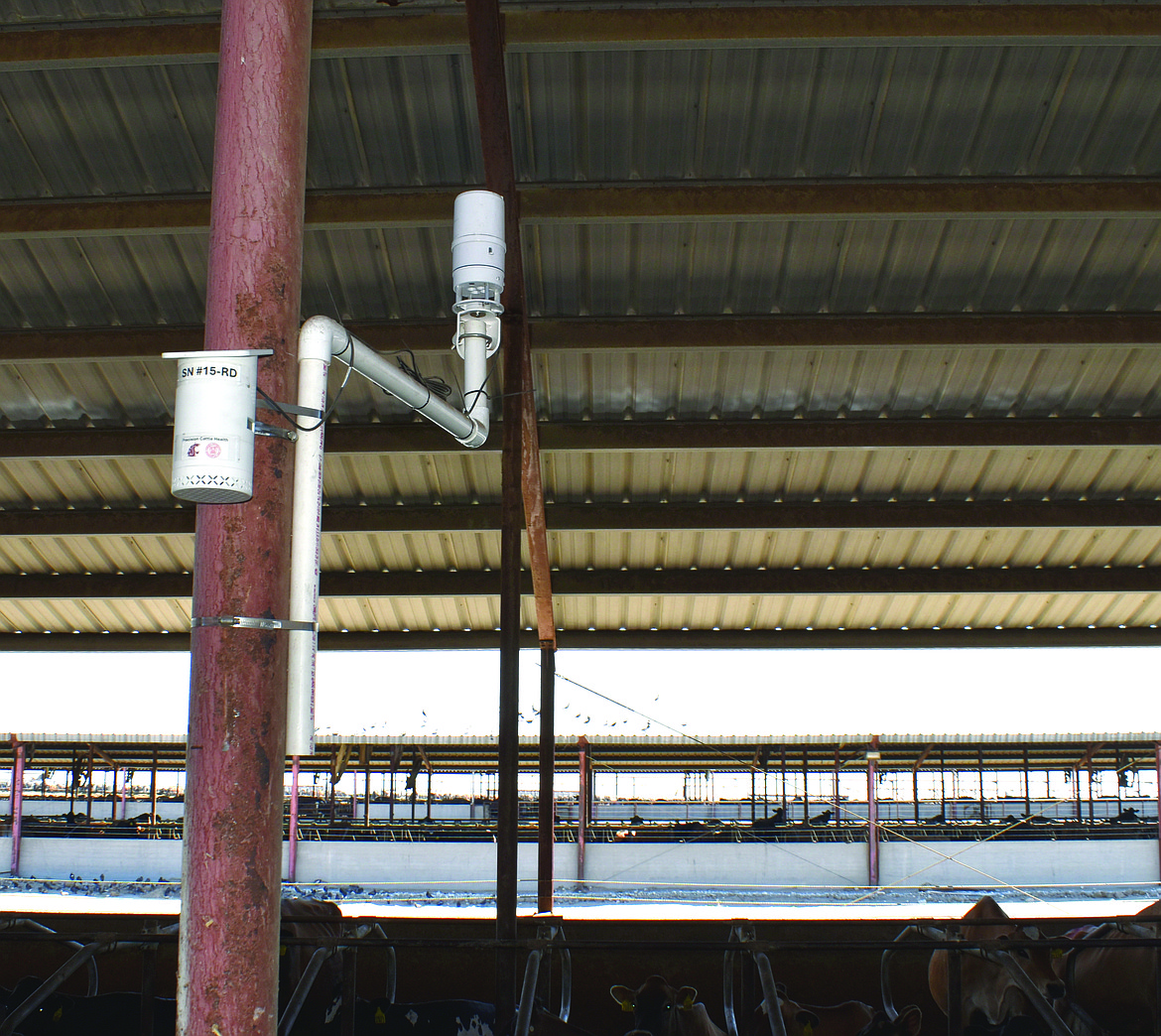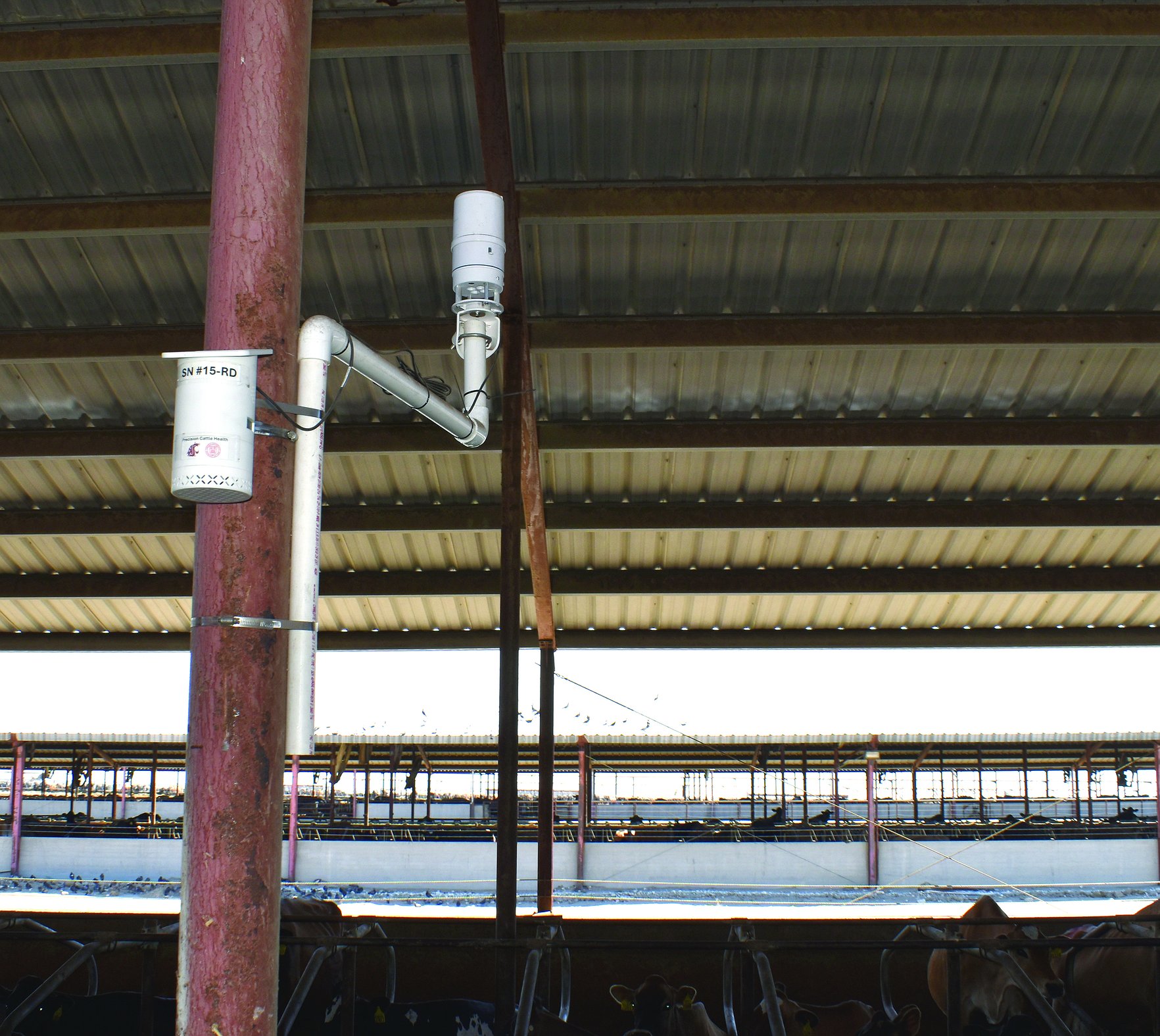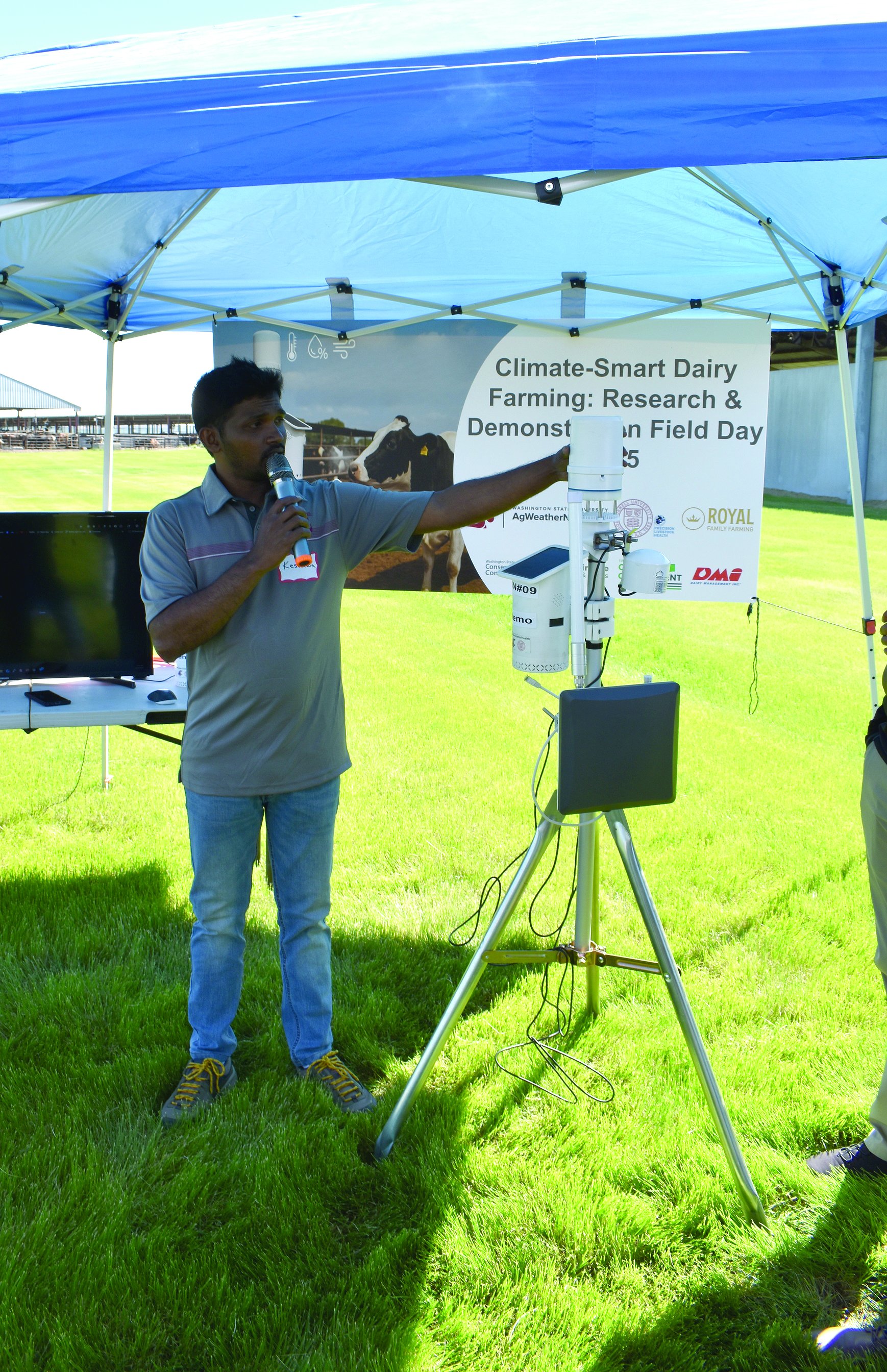WSU, Cornell demonstrate high-tech gas monitoring system at dairy farm
ROYAL CITY — Dairy farming is taking a step into a lower-carbon future, researchers from Washington State University and Cornell University said at Royal Dairy near Royal City May 31.
“There was a big push on the carbon footprint from dairy farms in the last 10 years,” said Dr. Francisco Leal-Yepes of Cornell University at the Climate-Smart Dairy Farming Research and Development Field Day at Royal Dairy. “Dairy farmers are actually doing a great job to reduce their footprint, not only in terms of reducing methane emissions but also resource use.”
The event showcased a system that Washington State University researchers have developed to measure emissions from cattle. It’s an adaptation of WSU’s (Ag Weather Network) Smart Farms network of private weather stations that allow growers to monitor weather conditions statewide in real time.
The system on display at Royal Dairy used sensors placed in cattle barns and other farm locations.
“We have built this low-cost greenhouse gas and weather sensing system, which is a wireless sensor network that you can deploy throughout your dairy farm and see the emissions coming out and get the baseline,” said Lav Khot, an associate professor in WSU’s Department of Biological Systems Engineering who holds a doctorate from North Dakota State University in Agricultural and Biosystems Engineering. “Then Dr. (Leal-Yepes’) team is going to use that data and come up with some mitigation scenarios where you can add feed additives for the animals, or if it’s dairy manure you can add biochar in certain concentrations.”
The project is funded through Washington’s Climate Commitment Act and allows growers to access carbon markets with more accurate measurements, Leal-Yepes said.
WSU Research Assistant Keshawa Dadallage demonstrated the nuts and bolts of the system, which can be managed from a computer dashboard or a mobile device. It receives data from about 24 sensors deployed around the farm: some in cattle barns, some at the dairy’s worm farm, some in the compost yard – that can measure carbon dioxide from zero to 50,000 parts per million, methane up to 30,000 PPM and carbon ammonia up to 100 PPM, Dadallage said.
Part of the purpose of the field day was to encourage other cattle growers to participate in the study. WSU is looking for commercial operators to install the sensors and expand the network’s localized data collection. The sensors cost about $1,600 apiece, according to WSU’s literature, and participating growers can benefit from shared localized data and analysis linking each farm’s emissions data with production and health metrics. Growers’ private data remains private, Cornell graduate student Geneva Graef assured the attendees.
“Not that many farms in the US are feeding this product currently, and that’s essential to have these collaborations with people that are actually moving forward with the industry trying to implement these sustainable practices and see the value of validating and using these techniques,” Leal-Yepes said.






